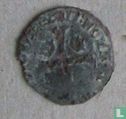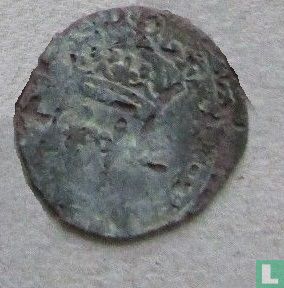

Enlarge image


Catalogue information
LastDodo number
7106197
Area
Coins
Title
France double tournois (Hugonaut douzain imitation) 1610-1643
Country
Face value
Year
1620
Variety / overstrike
Head of State
Type
Designer
Series
Theme
Material
Weight
3.04
Diameter
20
Thickness
Punch
Shape
Obverse
LVCDOVICVS XIII FRA ET NAVA L L
Reverse
R SIT NOMEN DOMINI EX BENEC
Edge
Privy mark
Mint mark
Number produced
Krause and Mishler number
Catalogue number
Details
Obv; Crowned lys shield, L - L
Rev; Cross, with lys in each part
During the religious turmoil, King Louis struck 2 tournois imitating illegal Hugonaut douzain coins, and the Hugonauts illegally re-struck 2 tournois into their own douzain coins.
Huguenots were French Protestants mainly from northern France, who were inspired by the writings of theologians in the early 1500s, and who endorsed the Reformed tradition of Protestantism, contrary to the largely German Lutheran population of Alsace, Moselle, and Montbéliard.
Huguenot numbers peaked near an estimated two million by 1562, concentrated mainly in the southern and western parts of France. As Huguenots gained influence and more openly displayed their faith, Catholic hostility grew, in spite of political concessions and edicts of toleration from the French crown. A series of religious conflicts followed, known as the French Wars of Religion, fought intermittently from 1562 to 1598. The Huguenots were led by Jeanne d'Albret, her son, the future Henry IV, and the princes of Condé. The wars ended with the Edict of Nantes, which granted the Huguenots substantial religious, political, and military autonomy.
Huguenot rebellions in the 1620s prompted the abolishment of their political and military privileges. They retained religious provisions of the Edict of Nantes until the rule of Louis XIV. Louis XIV gradually increased persecution of them until he issued the Edict of Fontainebleau (1685), ending any legal recognition of Protestantism in France and forcing the Huguenots to convert or flee in a wave of violent dragonnades.



